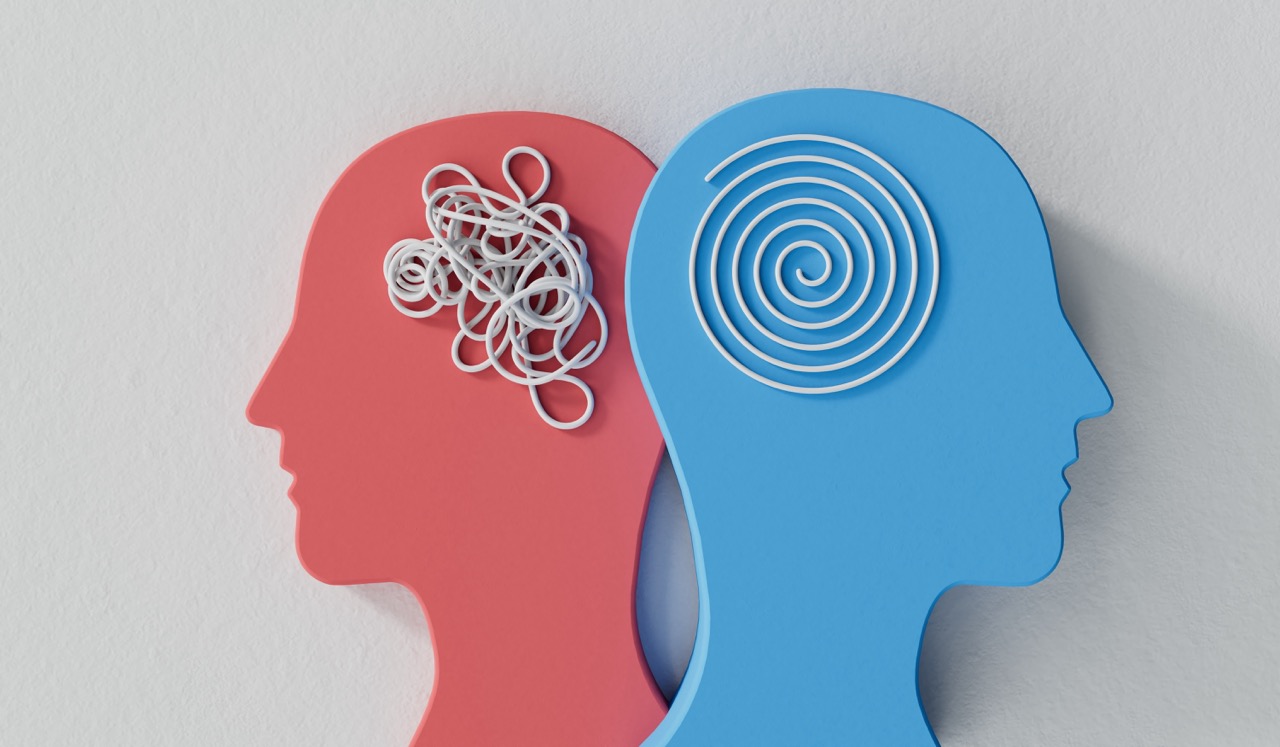Sexual Orientation and Identity
Sexual orientation is the pattern of emotional, romantic, and sexual attraction a person feels toward others. It exists on a wide spectrum and is an important part of a person’s identity, shaping how people relate to others and how they see themselves.
Understanding how one’s sexual orientation connects to their personal identity can help people build stronger self-awareness, which supports better mental health and personal growth. As society’s views on sexuality continue to change, research also grows, helping people better understand these important parts of the human experience and offering more support for the many ways people experience the world.

Understanding Sexual Orientation
Sexual orientation is an intrinsic aspect of the human experience that develops early in life. Research suggests biological factors play a significant role in determining sexual orientation, though scientists continue to study the complex interplay of genetics, hormones, and environmental influences on sexuality [1].
Current research indicates that sexual orientation likely establishes itself before birth or during early childhood, with most people becoming aware of their attractions during puberty or adolescence. The American Psychological Association (APA) and other major medical and mental health organizations recognize sexual orientation as a natural variation of human sexuality [2].
Scientists have also moved away from seeking a single “cause” for sexual orientation and have focused more on understanding the diverse ways orientation manifests across populations.
Additionally, brain imaging studies have found some structural and functional differences correlating with sexual orientation, suggesting biological underpinnings to attraction patterns. However, these studies remain preliminary, and researchers continue to explore a full range of influences that shape orientation throughout development.
Sexual Orientation vs. Gender Identity
Sexual orientation and gender represent distinct aspects of human identity that people may sometimes confuse. For this reason, it’s important to understand the difference between gender and sexual orientation.
Sexual orientation describes patterns of attraction, while gender refers to a person’s internal sense of their identity as male, female, both, or neither. A person can have any sexual orientation regardless of their gender.
Gender can include several components:
- Gender Identity: Refers to a person’s internal sense of their gender
- Gender Expression: Refers to how one’s gender presents outwardly
- Social Gender Roles: Refers to cultural expectations of one’s gender
People sometimes mistake these concepts because both relate to fundamental aspects of identity. For example, some assume incorrectly that gay men want to be women or that lesbian women want to be men.
These assumptions conflate attraction patterns with gender identity. In reality, most gay men identify as men and most lesbian women identify as women, regardless of whether they conform to gender stereotypes [3].
Understanding the differences between sexual orientation and gender helps reduce misconceptions and creates a more accurate understanding of human diversity.
Types of Sexual Orientations
Sexual orientations encompass a broad spectrum of attraction patterns rather than rigid categories. Research and evolving social understanding have expanded how we categorize these diverse experiences.
Common sexual orientations include:
- Heterosexual (straight): Attraction to people of a different gender
- Homosexual (gay/lesbian): Attraction to people of the same gender
- Bisexual: Attraction to both people of the same gender and people of a different gender
- Pansexual: Attraction to people regardless of gender
- Asexual: Limited or no sexual attraction to people of any gender
The continuous nature of sexual orientation means many people experience attractions that don’t fit neatly into these categories. For instance, some people identify as “mostly heterosexual” or experience varying degrees of attraction across their lifetime [4].
Further, contrary to some misconceptions, homosexuality and bisexuality represent variations of human sexuality rather than disorders or choices. Major medical and psychological organizations worldwide have affirmed this understanding based on extensive research. While some people may report fluidity in their attractions over time, one’s sexual orientation typically remains relatively stable throughout adulthood.
Identity Development
The process of recognizing and integrating sexual orientation into a cohesive sense of self follows psychological patterns similar to other aspects of identity formation. Psychologist Vivienne Cass developed one of the most widely used models of sexual identity development, describing six stages people often experience [5]:
- Confusion
- Comparison
- Tolerance
- Acceptance
- Pride
- Synthesis
This development typically begins with awareness of feelings that differ from presumed heterosexuality, followed by periods of questioning and exploration. Eventually, most people reach self-acceptance and integration of their sexual orientation as one aspect of their overall identity.
Psychologist Dr. Lisa Diamond explains: “Sexual identity development represents a complex interplay between innate predispositions and social context. People need psychological safety to authentically explore and express this fundamental aspect of themselves” [6].
Many factors affect this developmental process, including:
- Family attitudes and acceptance
- Cultural and religious background
- Access to supportive resources
- Exposure to role models
- Society’s overall acceptance
The timeline for identity development varies greatly among people, with some reaching clarity about their orientation in childhood or adolescence while others may not fully understand their sexual orientation until adulthood.
“Coming Out”
Coming out describes the process through which people recognize their sexual orientation and share this understanding with others. Coming out and sexual identity development are deeply intertwined.
It is a complex social and psychological process that usually happens over many years, often beginning with internal acceptance, followed by sharing sexual orientation with trusted friends or family before opening up to a wider circle.
The coming out process typically unfolds through several recognizable stages:
- Self-awareness and questioning
- Initial acceptance of identity
- Decision to disclose to others
- First disclosures to close contacts
- Integration into broader life and identity
Coming out can lead to significant psychological benefits for many people, reducing stress from hiding essential aspects of themselves and allowing authentic relationships. However, the process can also carry risks for some, especially in environments where acceptance remains limited [7].
This is important because reactions from family and friends substantially impact mental health outcomes, with acceptance correlating strongly with psychological well-being.
The decision to come out remains deeply personal, and there is no single “right” approach or timeline. Each person must weigh potential benefits against risks within their specific circumstances. To protect their safety, some people decide to limit who they tell or postpone coming out until they are fully independent or reach adulthood.
Supporting Mental Health
People with diverse sexual orientations face unique mental health considerations, often stemming from societal responses rather than from orientation itself. Research consistently shows that minority stress (chronic stress from stigmatization and discrimination) increases one’s risk for anxiety, depression, and substance use problems [8].
Supportive environments significantly reduce these risks. Key protective factors include:
- Family acceptance and support
- Affirmative social networks
- Access to appropriate healthcare
- Communities that embrace diversity
- Positive representation in media and culture
- Use of inclusive language for sexual orientation
When seeking mental health care, finding providers who are knowledgeable about sexual orientation is important. Professionals who understand mental health challenges facing LGBTQ+ people, for instance, can provide more effective support, and many mental health organizations now maintain directories of culturally competent providers.
Self-care strategies also help maintain well-being, including connecting with supportive communities, practicing stress management techniques, and developing resilience through positive identity affirmation. Online resources provide valuable information and support, especially for those in areas with limited in-person options.
The Evolving Nature of Sexual Orientation
Sexual orientation represents a fundamental aspect of human diversity that includes far more complexity than simple categories suggest. Recognizing the distinction between sexual orientation and gender while also acknowledging the spectrum of attractions people experience helps create more accurate perspectives of identity and understanding.
Research also plays a key role here by continuing to expand knowledge about the biological foundations and psychological dimensions of sexual orientation. As a result, this growing understanding supports the development of better resources for LGBTQ+ people exploring their identities and improves their mental health outcomes through increased social acceptance.
For those seeking to understand themselves better or support others, approaching sexual orientation with openness, respect, and accurate information is key. No matter how one identifies, this helps create the foundation for healthy identity development and positive mental health outcomes for all.
- Bailey, J. M., Vasey, P. L., Diamond, L. M., Breedlove, S. M., Vilain, E., & Epprecht, M. (2016). Sexual orientation, controversy, and science. Psychological Science in the Public Interest, 17(2), 45-101. https://doi.org/10.1177/1529100616637616. Accessed 27 April 2025.
- American Psychological Association. (2022). Understanding sexual orientation and homosexuality. https://www.apa.org/topics/lgbtq/orientation. Accessed April 27, 2025.
- Hyde, J. S., Bigler, R. S., Joel, D., Tate, C. C., & van Anders, S. M. (2019). The future of sex and gender in psychology: Five challenges to the gender binary. American Psychologist, 74(2), 171-193. https://doi.org/10.1037/amp0000307. Accessed 27 April 2025.
- Savin-Williams, R. C., & Vrangalova, Z. (2013). Mostly heterosexual as a distinct sexual orientation group: A systematic review of the empirical evidence. Developmental Review, 33(1), 58-88. https://doi.org/10.1016/j.dr.2013.01.001. Accessed 27 April 2025.
- Cass, V. C. (1984). Homosexual identity formation: Testing a theoretical model. Journal of Sex Research, 20(2), 143-167. https://doi.org/10.1080/00224498409551214. Accessed 27 April 2025.
- Diamond, L. M. (2020). Gender fluidity and sexual fluidity. Nature Human Behaviour, 14(2), 110-115. https://srcd.onlinelibrary.wiley.com/doi/abs/10.1111/cdep.12366. Accessed 27 April 2025.
- Ryan, C., Russell, S. T., Huebner, D., Diaz, R., & Sanchez, J. (2010). Family acceptance in adolescence and the health of LGBT young adults. Journal of Child and Adolescent Psychiatric Nursing, 23(4), 205-213. https://doi.org/10.1111/j.1744-6171.2010.00246.x. Accessed 27 April 2025.
- Meyer, I. H. (2003). Prejudice, social stress, and mental health in lesbian, gay, and bisexual populations: Conceptual issues and research evidence. Psychological Bulletin, 129(5), 674-697. https://doi.org/10.1037/0033-2909.129.5.674. Accessed 27 April 2025.
The Clinical Affairs Team at MentalHealth.com is a dedicated group of medical professionals with diverse and extensive clinical experience. They actively contribute to the development of content, products, and services, and meticulously review all medical material before publication to ensure accuracy and alignment with current research and conversations in mental health. For more information, please visit the Editorial Policy.
MentalHealth.com is a health technology company guiding people towards self-understanding and connection. The platform provides reliable resources, accessible services, and nurturing communities. Its purpose is to educate, support, and empower people in their pursuit of well-being.
Briana Casali, Ph.D. is an experienced editor and professional writer with a background in academic editing and journalism for high-growth organizations.
Shivani Kharod, Ph.D. is a medical reviewer with over 10 years of experience in delivering scientifically accurate health content.
The Clinical Affairs Team at MentalHealth.com is a dedicated group of medical professionals with diverse and extensive clinical experience. They actively contribute to the development of content, products, and services, and meticulously review all medical material before publication to ensure accuracy and alignment with current research and conversations in mental health. For more information, please visit the Editorial Policy.
MentalHealth.com is a health technology company guiding people towards self-understanding and connection. The platform provides reliable resources, accessible services, and nurturing communities. Its purpose is to educate, support, and empower people in their pursuit of well-being.


